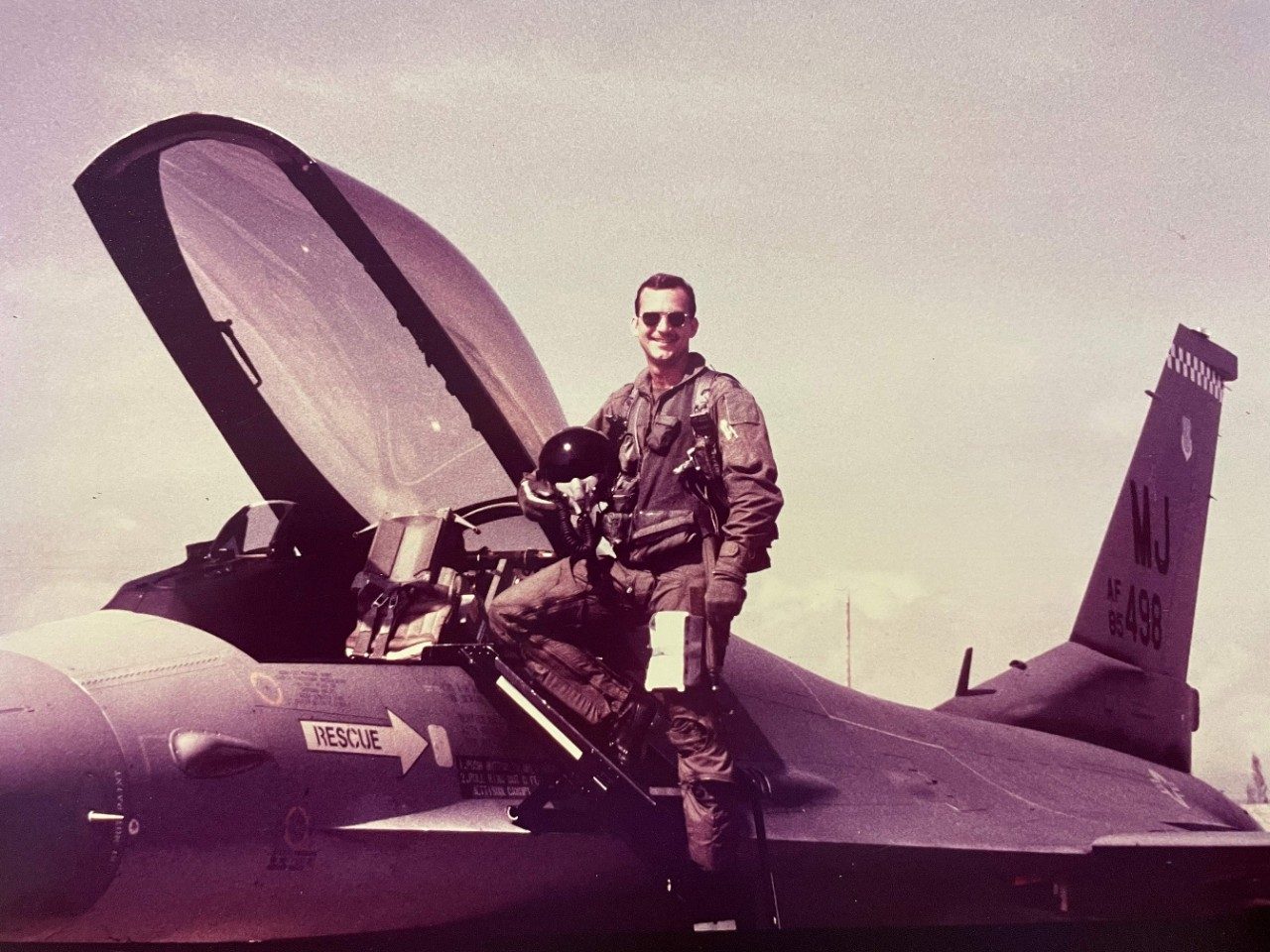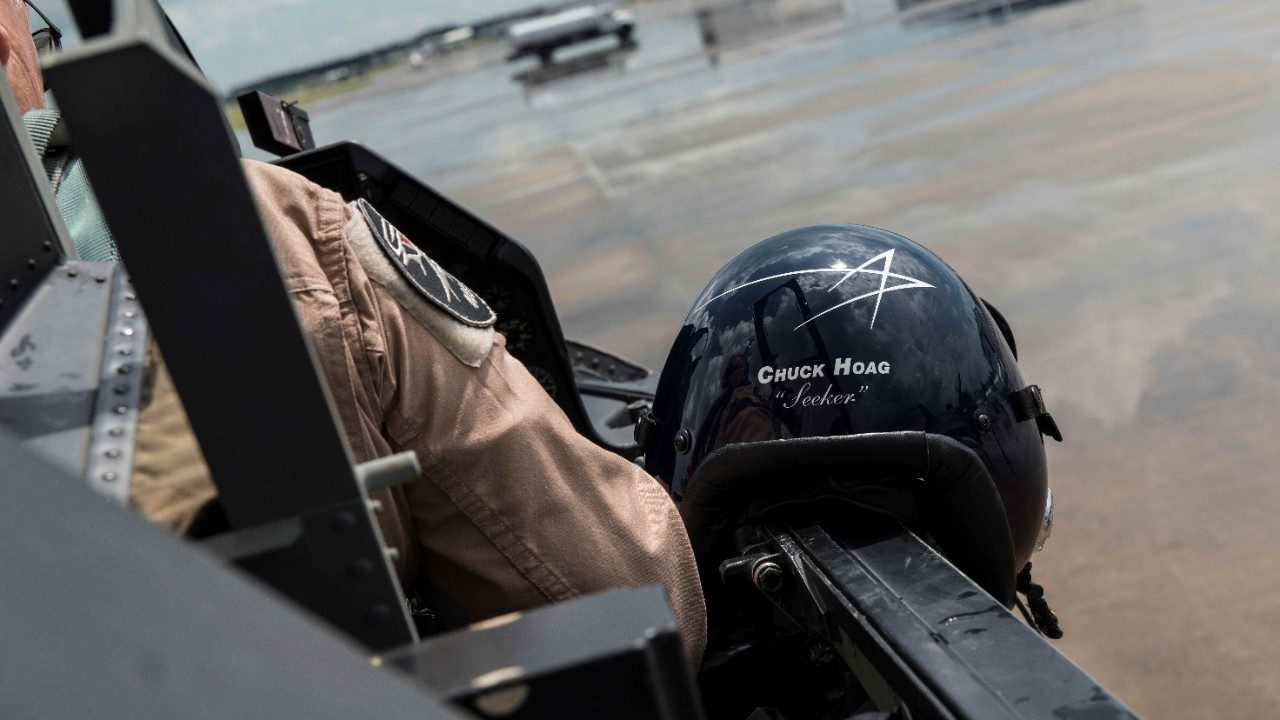One Pilot Who's Flown Nearly Every Version of the F-16
Chuck “Seeker” Hoag’s experience with the F-16 includes flying and teaching. With nearly 6,000 F-16 flight hours and more than 35 years of experience, his career has taken him all over the world. This includes significant time spent training pilots from the Royal Thai Air Force (RTAF), which Lockheed Martin has partnered with for decades supporting the delivery, operations, upgrades and sustainment of its F-16 aircraft.
Having flown blocks 10 through 70, Seeker offers his unique perspective as the F-16 program continues production after having celebrated the delivery of the 4,600th F-16 this past summer. We spoke to Seeker to learn about the technology he has witnessed throughout his time with the F-16. When explaining those, he also discussed the critical safety lessons he is privileged to share with Thai F-16 pilots and crew today.
Q: Can you talk about your F-16 career and what led to your involvement in training pilots from countries like Thailand?
A. I started flying F-16s in 1987 after logging over 1,000 hours in another aircraft. Since then, I've flown every F-16 block: 10s, 15s, 20s, 25s, 30s, 32s, 40s, 42s, 50s, 52s, 60s, and now the block 70s, which are currently coming off the production line.
My work with Thai pilots was part of my broader experience training international pilots across several countries, including the UAE, Türkiye, South Korea, Oman, Taiwan, Indonesia, and Greece. This career began in the United States Air Force, where I served as an officer and instructor pilot for more than 23 years. After transitioning to Lockheed Martin, I continued my F-16 career, flying production aircraft and providing training and technical support to F-16 customers worldwide.
In my work with Royal Thai Air Force (RTAF) pilots, I’ve been impressed by their skill and dedication. Many of them attend top schools across the globe and return with a strong drive to succeed. One pilot, in particular, stood out for his exceptional English proficiency — not just from a technical standpoint, but also in understanding humor and nuance. Like many others in his wing, he was like a dry sponge, eager to soak up more knowledge, which made the training experience truly rewarding.

Q. Throughout your decades of multinational F-16 instruction, what have you observed in international cooperation?
A. I’ve had a lot of opportunities to discover what goes into and comes out of international cooperation. Each experience has allowed me to see how each country’s needs are met in different, highly specific ways by how they use the F-16. Thailand is a great example. They’ve done an impressive job of integrating the F-16 into their defense strategy. And seeing the versatility of the aircraft in action has expanded my field of view, showing me new ways of doing things. That’s one thing that comes out of international cooperation.
Another thing is the advantage inherent in commonality. When you’ve got different countries around the world all using the F-16 platform — even with different blocks or versions — it simplifies cooperation from the standpoint of logistics, weapons, everything. When you work with an international partner with the same equipment, everything’s going to run a lot smoother.
Also, international cooperation makes for stronger allies, both individually and as a team. I recently returned from Thailand after giving safety briefings to both F-16 wings. And I observed RTAF pilots and maintainers who are eager to learn from real-world experiences and apply those lessons to their operations. It keeps them prepared and able to get the most out of their F-16s to keep their fleet performing at its best, year after year. We’ve been working together for decades, and that long-term partnership ensures they can keep their fleet performing at its best.
Q. How have you seen the F-16 evolve in technology, and what features stand out the most in the newer blocks?
A. The greatest-impact technological advancements have been in the F-16’s avionics, radar, weapons and engine. These are the most critical systems for a fighter pilot; they shape the entire mission.
Today’s F-16 avionics include new displays and once-analog tech that’s now digital. [MIL-]1553 bus traffic, for example, evolved into a fiber channel with an active network, and then further evolved into Ethernet. The bandwidth is better, and you get answers faster and reduce the pilot workload. Another example is the AESA [Active Electronically Scanned Array] radar, which lets you see farther and discern complex situations quicker. Then, there’s the helmet-mounted display, which makes you more capable in the cockpit because it moves as you turn your head. The previous display, the HUD [head-up display], required you to look right at it.
The weapons suite has also evolved. Newer blocks can handle longer-range missiles like the AIM-120, offering more flexibility and firepower during missions. These were part of the Mid-Life Upgrade that the RTAF’s F-16 fleet received, so Thai pilots are seeing the benefits firsthand. The RTAF also got Link 16 tactical data link, which is giving them real-time data-sharing — a game-changer proven in exercises like Cobra Gold and Pitch Black.
Engines in today’s F-16s require less maintenance and have greater reliability and thrust. As new tech and bigger payloads increase the aircraft’s weight, more thrust is needed to keep the aircraft maneuverable, and that’s not a problem with the improved engines. This, along with the other upgrades I described, is enhancing the RTAF’s overall fleet. The advancements are making the RTAF a stronger partner in joint missions, ready for more complex operations alongside other nations.

Q. What are the most important things to know about flying an F-16?
A. First, “don’t be a child of the green.” And what that means is, take a wide field of view. Back in the Block 10, we had a very small green HUD, and everybody would stare at that instead of looking inside the cockpit or outside the window. That’s how this expression came about, and it’s stuck for decades.
Second, “remember that you’re always one switch, one dobber or one display away from the right one.” What that means is, you’ve got to know your system. Learn it like your life depends on it. Know where to go to get the information you need in the most efficient manner possible.
Third, “CZ is your friend.” Use cursor zero, or “CZ,” when you need to get back to a solid starting position. When things get complicated, it’s like a reset button when you get turned around while slewing things.
If you can apply those three things, you’ll be a great F-16 pilot.





